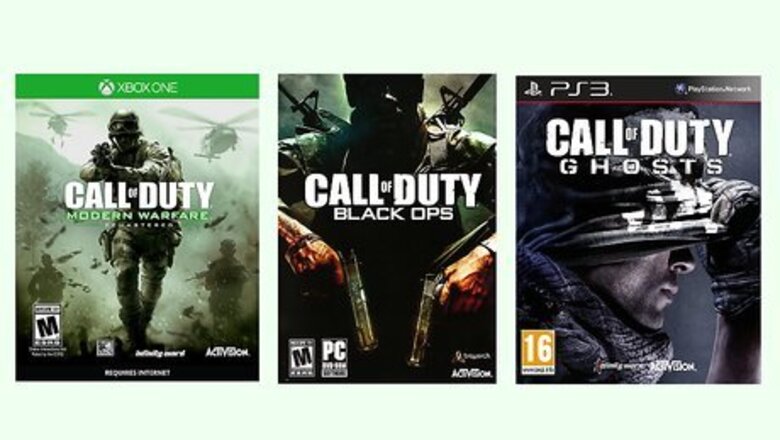
views
Preparing to Play
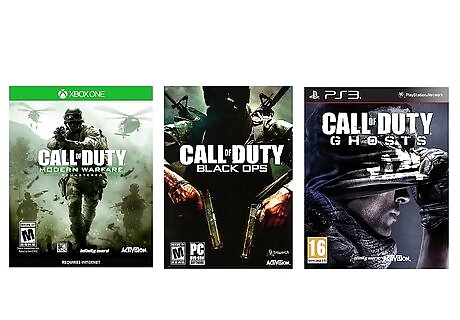
Choose a Call of Duty game to play. The formula for virtually every Call of Duty game is identical, so it doesn't really matter which game you choose; however, each game has a few unique qualities. As of August 2018, competitive Call of Duty games include the following series: Modern Warfare — The Modern Warfare series includes three games (Modern Warfare, Modern Warfare 2, and Modern Warfare 3). Modern Warfare Remastered is an updated version of the original Modern Warfare. Black Ops — The Black Ops series includes three entries (Black Ops, Black Ops 2, and Black Ops 3) with a fourth entry due for release in November 2018. Other — This includes games like World at War, Ghosts, Advanced Warfare, Infinite Warfare, and WW2.

Familiarize yourself with the primary gameplay mechanics. These are consistent things—like aiming, moving, and reloading—that are mostly identical for each Call of Duty game. It's important to be comfortable with these mechanics before you start a game. When learning primary gameplay mechanics, it's best to start with a game that uses clunkier mechanics (e.g., Modern Warfare Remastered) than a newer game. This will allow you to understand the base mechanics without some of the extra conveniences you'll find in newer games. A good way to learn these mechanics is by starting an offline multiplayer game by yourself and testing out each of the buttons on your controller. Once you're comfortable with the buttons, their functions, and general movement, you can start doing more complex things like shooting, reloading, switching weapons, and so on.
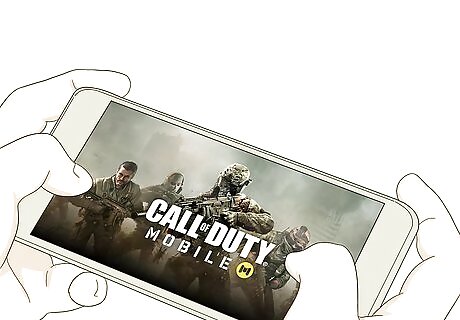
Get to know the secondary gameplay mechanics. These are mechanics that are specific to your selected Call of Duty game; for example, a secondary mechanic in Black Ops 3 is that you can double-jump and wall-run. Each game has slightly different secondary gameplay mechanics, so spend some time getting to know them before jumping into a multiplayer game. Playing the campaign is a good way to do this. Observing other players' uses of secondary mechanics may also help you.
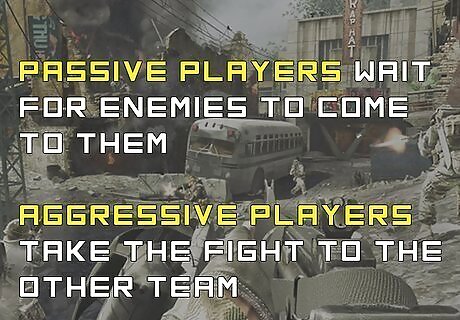
Figure out how you want to play. Knowing your play style before you jump into a match is the difference between being assertive and being dead. There are two main play styles: passive and aggressive. Passive players wait for enemies to come to them, while aggressive players take the fight to the other team. It's good to be aggressive in Call of Duty, but you might want to start out by playing passively until you've mastered the basics.
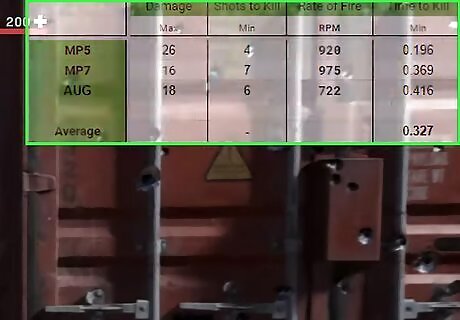
Keep in mind the Time to Kill value. Time to Kill (or TTK) is a value that measures a first-person shooter's responsiveness in terms of how long it takes to kill an enemy player with sustained fire. Call of Duty games all have fairly quick TTK values, so you shouldn't need to empty your whole magazine into an enemy player; a few rounds will usually do the trick. TTK will vary depending on the gun you're using. Once you understand your gun's TTK, try to use the appropriate number of rounds per engagement. It can be tempting to reload as soon as you've shot an enemy two or three times, but make sure you've actually finished off the enemy before doing so.
Playing Online
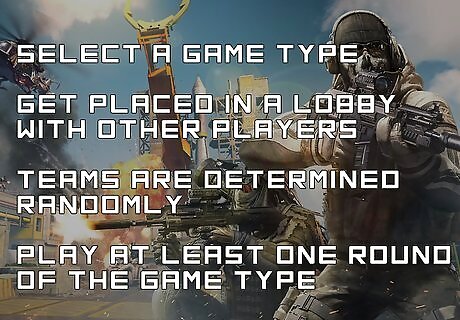
Understand how Call of Duty multiplayer generally works. With the exception of Call of Duty 1, 2, and 3, COD multiplayer is fundamentally identical across its various games: after selecting a game type, you're placed in a lobby with other players, and your teams are determined randomly (not applicable for free-for-all game modes). You'll then play at least one round of the game type. Depending on the game type, you may play several rounds before the match is officially over. Typically speaking, you'll be placed in a new match within a couple minutes of the last one ending if you don't exit the lobby.
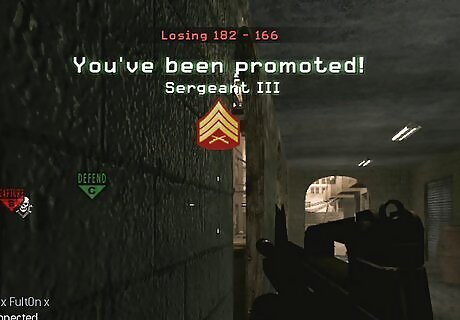
Know how to level up. Leveling up is automatic in every Call of Duty game. Playing in matches (e.g., killing enemies, completing objectives, etc.) earns you experience points (XP); once you've earned enough points to level up, your character will do so. As you level up, you'll unlock new weapons, perks, killstreaks, and so on. Most COD games allow you to unlock attachments for your guns by using the guns in question (e.g., getting a certain number of kills with an AK-47 will unlock a red dot sight for the AK-47). Games in the Black Ops series handle unlocks in a different way: once you level up, you receive a token that you can spend on any item for which your current level is appropriate.
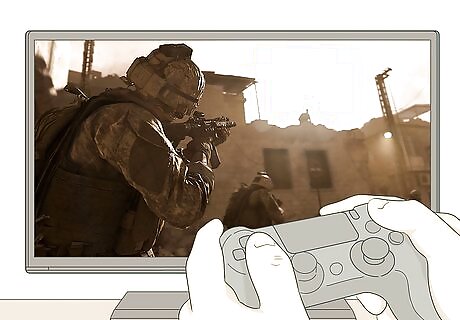
Stick to your playing style. Once you've established a playing style, don't waste time second-guessing it—just use it as often as possible. If you're an aggressive player, rush the enemy team as soon as the match starts, and if you're a conservative player, hang back while everyone else rushes. Versatility is key in Call of Duty, so you will occasionally have to change up your playing style to fit maps or gametypes. For example, if you usually play aggressively but you're defending an objective, it's best to play more conservatively for the time being.
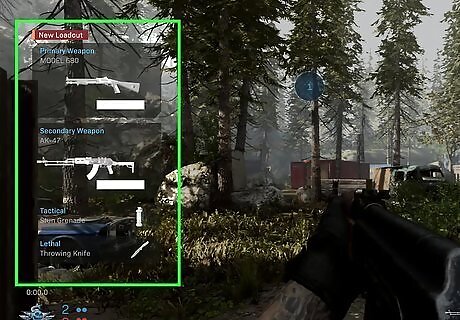
Use custom classes. After you play enough to reach level 4, you'll be able to create your own "classes", which are loadouts including weapons, grenades, and modifiers of your choosing. While classes vary slightly from game to game, most include the following aspects: Primary weapon — Your main weapon. Categories include assault rifles, SMGs, shotguns, sniper rifles, and LMGs. Secondary weapon — Your backup weapon. Categories include pistols, riot shields, rocket launchers, and—in some games—shotguns. Lethal and Nonlethal — Throwable items. Lethal items include things like grenades, Semtex, and throwing knives, while nonlethal options include flashbang grenades, stun grenades, and so on. Perks — Modifiers that change attributes about your character. Perks do things like allowing you to run faster, carry more ammo, avoid showing up on the minimap, and so on. Killstreaks — Rewards you can earn for getting consecutive kills without dying. These include things like radar for your team, airstrikes, gunship support, and tactical nukes. Some games also have death-streaks that will activate after several deaths with no kills. Wildcards — Modifiers in the Black Ops series. These allow you to "break" the game's rules by doing things like taking an extra attachment for your secondary weapon or replacing your secondary weapon with a primary one. Attachments — Items that go on your primary and secondary weapons. These include scopes, silencers, grenade launchers, heartbeat detectors, and so on. Specialist — Games in the Black Ops series allow you to play as a "Specialist", which is a set character with specific abilities. Choosing a Specialist who fits your play style will give you an edge.
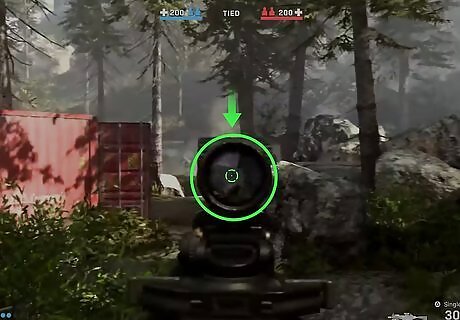
Aim down your gun's sights. When shooting, aiming down your gun's sights will afford you significantly more accuracy than if you fire from the hip. This is true for all weapons—even shotguns—in all Call of Duty games. By default, you can aim down sights (ADS) by pressing the left trigger (consoles) or holding down the right mouse button (PC). As a general rule, don't fire your weapon without aiming down your gun's sights unless you're at point-blank range.

Don't forget to use your knife. In most Call of Duty games, the knife is the default melee option; using it on a human enemy in close quarters is almost always a one-shot kill. Exceptions to the one-shot kill rule include Black Ops 3 and Infinite Warfare, as these games both use your primary weapon's stock as a melee weapon. Some games, such as Black Ops 3 and Advanced Warfare, use a punching animation instead of the knife.
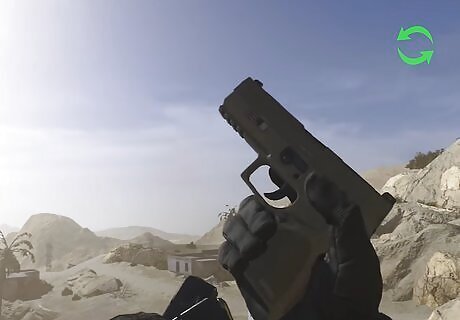
Reload often. If you're new to first-person shooters, it can be difficult to remember to reload after killing an enemy. It's important to reload whenever you have enough time to do so; even if you only used a couple of bullets, reloading will ensure that you have a full magazine for your next encounter. The exception to this rule is if you're in an area with a large number of enemies. If you have enough bullets in your gun's magazine to take on one or two more people, it may make more sense to do so before reloading; you can always switch to your secondary if another enemy comes around the corner before you finish your reload. Guns such as LMGs (light machine guns), sniper rifles, and shotguns typically have high reload times, so it's best to reload these in cover rather than on the go.
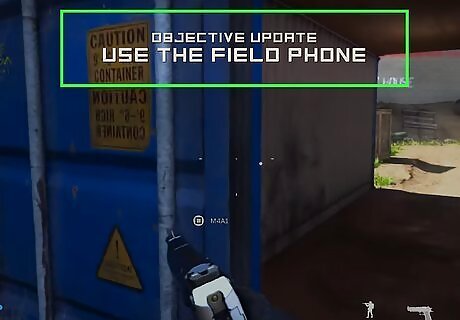
Play the objective. "Playing the objective" refers to helping your team accomplish the goal for the current game type; for example, if you're playing Team Deathmatch, the objective is to get more kills than the enemy team. When playing objective-based games like Search and Destroy, you'll want to make sure that you're not just treating it like an iteration of Team Deathmatch. Kills aren't always the only end goal.
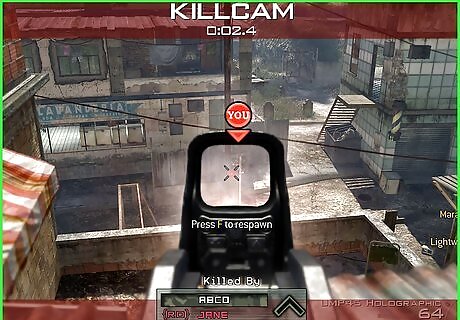
Watch the kill cam. If you find that you're dying endlessly, try watching the kill cam that plays after you die. This will give you an idea of how other people play. Watching the kill cam will also delay your spawning into the match, which is a good thing if you're dying often as it gives your team time to recoup some points without you dying. Some games, such as ones in the Black Ops series, allow you to rewatch matches from your perspective via the "Theater" option. This is a good idea if you want to analyze your own games.
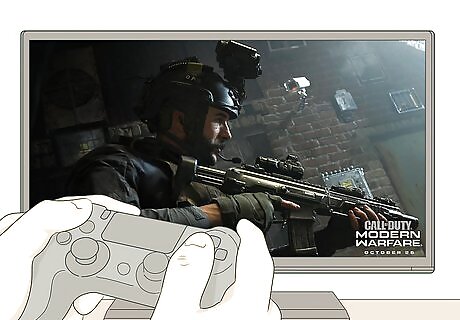
Keep playing. Call of Duty has a fairly steep mastery curve, and it can be incredibly unforgiving; the best way to improve your game is by continuing to play despite frustration.
Playing Offline
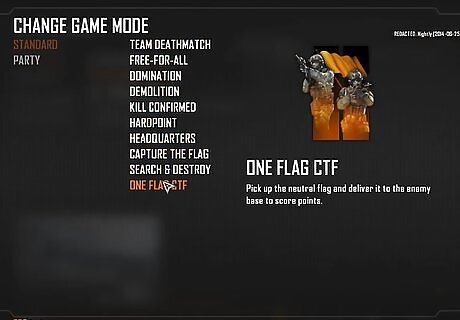
Know which modes are available. You may have anywhere from one to three offline modes depending on which Call of Duty game you're playing: Campaign — A linear, story-based game mode. Call of Duty games released in 2018 and beyond may not have campaigns. Nazi Zombies — A horde-based game mode in which you attempt to survive waves of zombies. The Ghosts version of this mode is called "Extinction". Spec Ops — A collection of short excerpts of missions or challenges. Spec Ops is only available in Modern Warfare 2 and Modern Warfare 3. Survival — Call of Duty: Modern Warfare 3 has a wave-based spin-off of Spec Ops called "Survival". This mode is comparable to Firefight from Halo or Horde Mode from Gears of War.
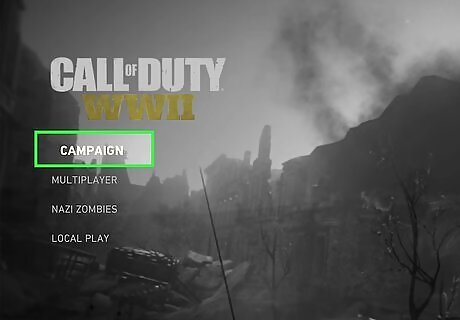
Try playing the campaign first. While you most likely have at least two singleplayer options, the campaign is specifically formulated to introduce you to your selected game's mechanics. If you've played Call of Duty before, you're probably familiar enough with these mechanics that you can play whichever mode you like.
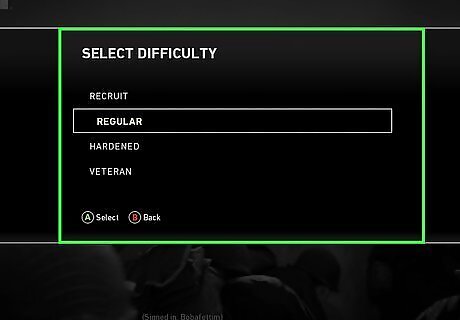
Set a lower difficulty than you think you'll need. If this is your first Call of Duty campaign, try using the easiest or second-easiest difficulty setting when you start out. If it turns out that your difficulty is too easy, you can always raise it later. The "Veteran" difficulty can be incredibly hard, especially in older games such as Modern Warfare 2 and Black Ops.
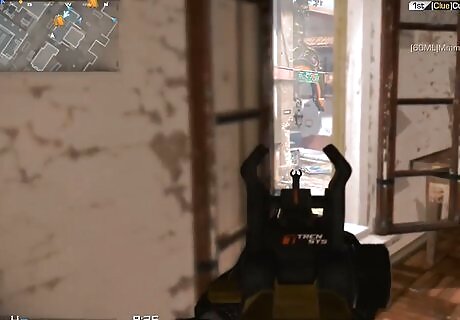
Stick to cover when possible. Even though Call of Duty allows you to regenerate your health, it's best to stay out of sight of enemies until you're ready to fire. Once you're done firing, getting back into cover will prevent you from soaking up too much damage. This is especially true on higher difficulties.
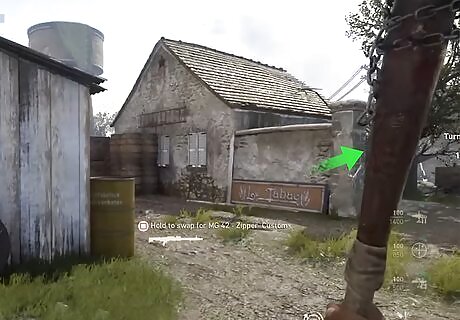
Don't forget to use your melee. In most Call of Duty games, the melee attach—typically a knife—is a one-shot kill in the campaign. As most enemies will attempt to melee you if you get close to them, this is most viable when an enemy surprises you rather than when you run up to an enemy. Some COD games, such as Black Ops III, replace the knife with a standard melee attack; however, the principle is the same.
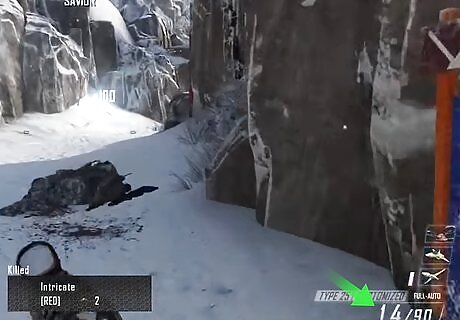
Keep an eye on your ammo. It can be easy to burn through over half a magazine on one enemy and then forget to reload, so make sure you're keeping your magazine topped off when possible. A good rule of thumb is to reload after every engagement. For example, if you kill two enemies and you know a few more are coming, duck back into cover and reload before proceeding. Spraying through your entire magazine by holding down the trigger isn't recommended, as doing so is both inaccurate and wasteful. Try tapping the trigger to fire in bursts.
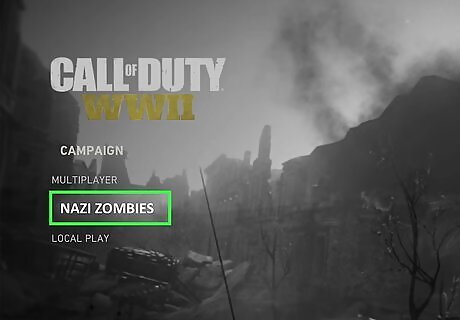
Try Nazi Zombies if it's available. Nazi Zombies is a wave-based mode in which you fight increasingly difficult zombies while building barriers, maintaining your fortifications, unlocking new areas in the map, and so on. There are a few key points to help get you started in Nazi Zombies mode: Use your knife for the first few rounds. Ammo is invaluable, and you can kill zombies in one or two strikes with the knife during the initial rounds. Go for headshots. Zombies can soak up a huge amount of body damage unless you have an exceptionally powerful weapon (e.g., the Ray Gun). Run away if you get hit once. Zombies can down you by hitting you more than once, so let your health recharge before re-engaging the zombies. Don't skip the upgrades. Buying weapons, upgrading them via the Pack-a-Punch machine, and purchasing drinkable buffs will all help you survive for longer. Avoid getting cornered. It's better to kite zombies around the map by running in circles than to get stuck in between a burning car and a mob of the undead.

Check out Spec Ops if you're playing Modern Warfare 2 or Modern Warfare 3. Spec Ops is a game mode that places you in specific situations that are often based on sections of missions in the game's campaign. Completing Spec Ops missions in a certain amount of time will unlock more missions. There's no specific strategy for Spec Ops since each mission is different. In Modern Warfare 2, speed-running Spec Ops missions when possible is often more viable than slowly inching your way through them. If you're playing Modern Warfare 3, you might also want to check out the horde-based "Survival" mode found in the "Spec Ops" section.




















Comments
0 comment